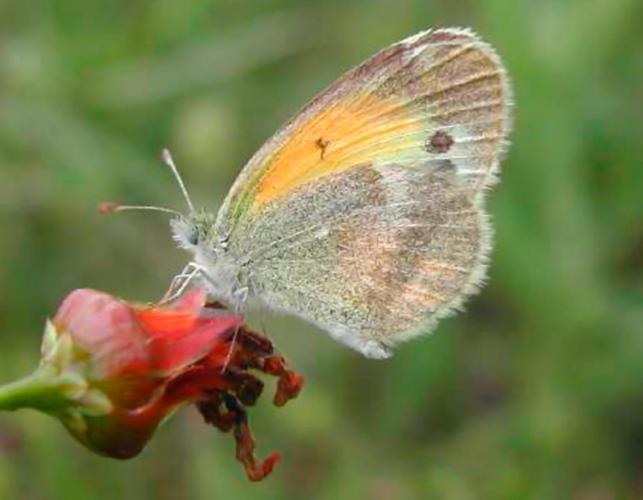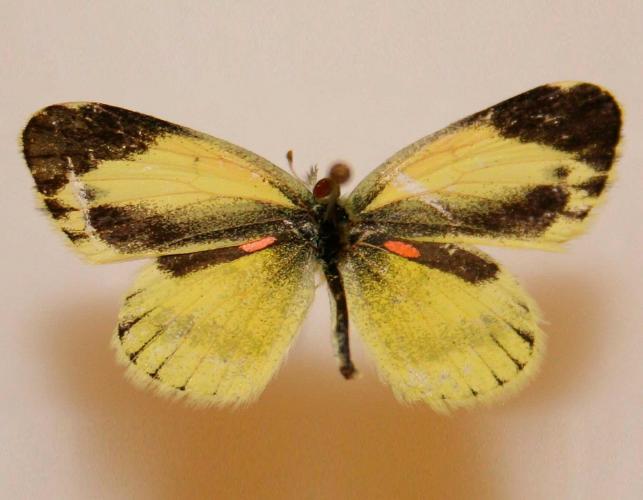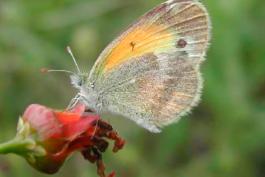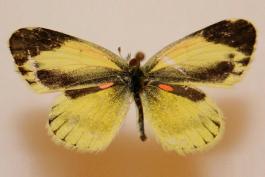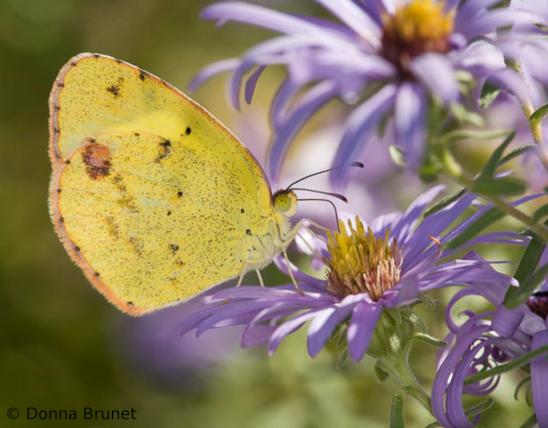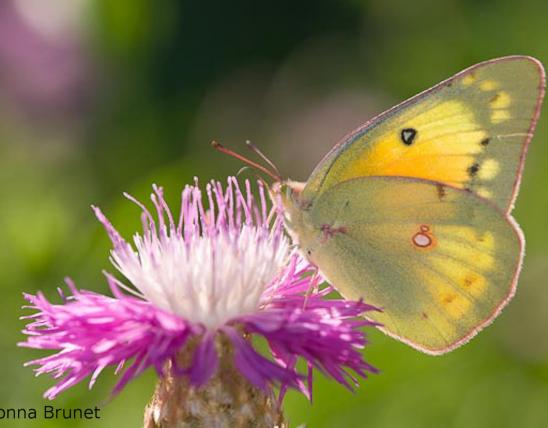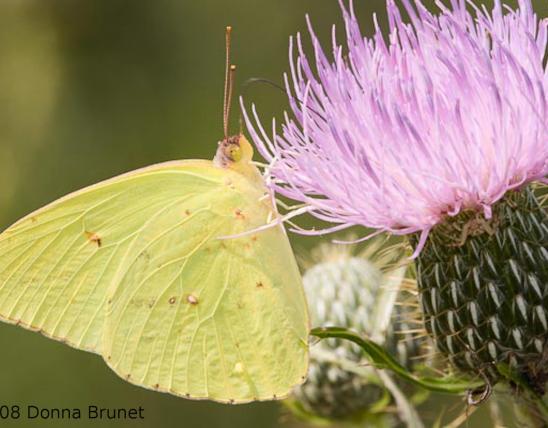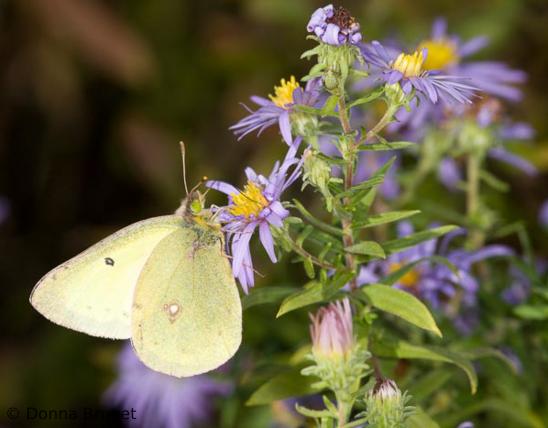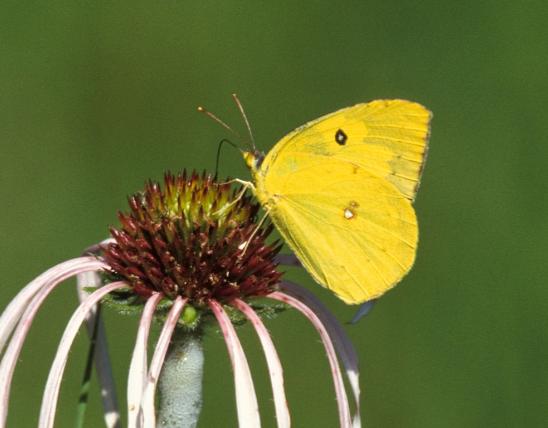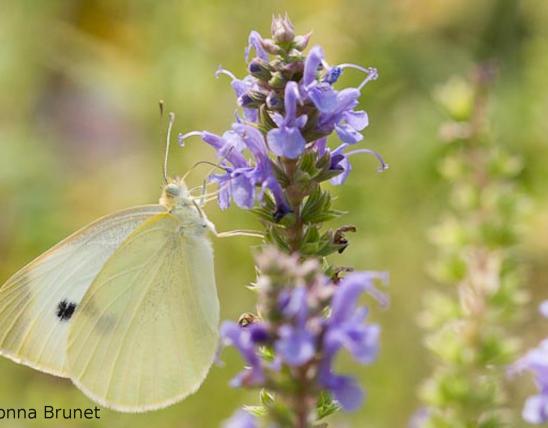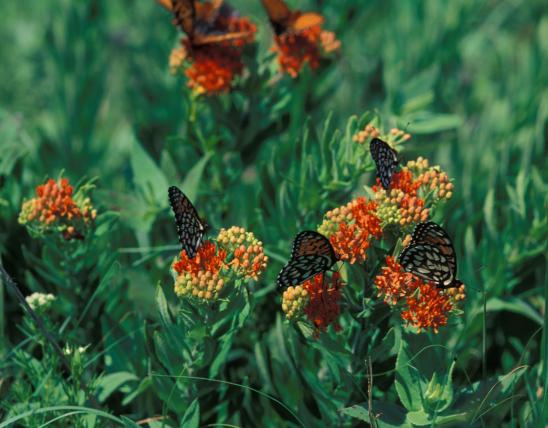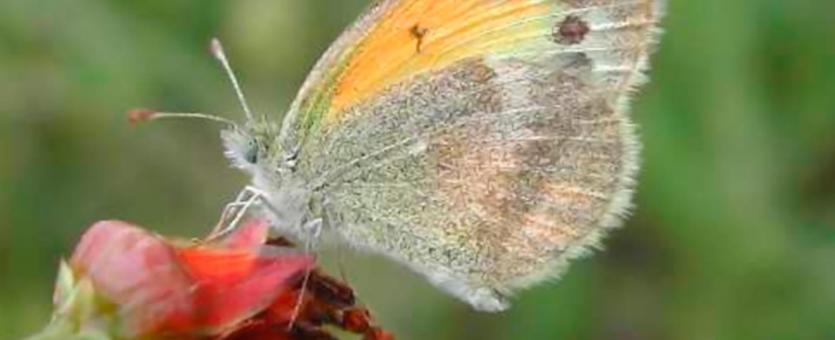
The dainty sulphur is the smallest sulphur in North America. Compared to other sulphurs, the forewings of this species are rather elongated. Dainty sulphurs typically fly just inches above the ground. The upperside is yellow with black forewing tips. Black upperside markings are more extensive in females. On the undersides of the forewing, the discal cell (at the basal core of the wing) is orange or a deep yellow, and there are two black spots positioned rather near the outside edge. The underside of the hindwing is pale yellow in the summer, but it is dark olive green at the end of the flight season.
Larvae are dark green with a lavender stripe running down the back, a yellow and blackish-brown stripe along the sides, and two reddish tubercles covered with bristles on the thorax (behind the head).
Wingspan: ¾–1¼ inches
Statewide.
Habitat and Conservation
Most common here in the fall, dainty sulphurs can be found in open, weedy areas throughout Missouri after a summer arrival from southern states. Although unable to survive winters in the north, dainty sulphurs are not known to migrate south. Look for adults gathering at moist places and visiting flowers.
Food
This is the only North American sulphur caterpillar to eat composites (members of the daisy/sunflower family), including fetid marigold (Dyssodia papposa) and sneezeweeds (Helenium spp.).
Life Cycle
This species does not survive winters in our state. The range expands northward from southern states and individuals begin appearing in Missouri in April, and numbers increase as the summer goes on. Males fly just over the ground, in low terrain, looking for females. The females lay eggs singly on young host plants such as sneezeweeds, marigolds, and members of the genus Bidens.
Human Connections
The term butterfly apparently arose in Europe inspired by a member of this family called the “brimstone.” That butterfly is as yellow as butter — or as yellow as sulfur (the rotten-egg-smelling mineral also called brimstone). So, one namesake references a stinky yellow mineral, the other a creamy, tasty dairy product. By the way, the British usually spell the mineral “sulphur,” while Americans spell it “sulfur”—but all tend to spell the butterflies “sulphur.”
Ecosystem Connections
The amount of light the caterpillars experience directly influences their later coloration as adults. Caterpillars exposed to a relatively short photoperiod (10 hours of daylight) produce dark-form adult butterflies that have three times the number of dark scales on the underside than butterflies that had been exposed to 16 hours of daylight as caterpillars.
Having a darker coloration helps dainty sulphurs in cool months. When basking, they close their wings and position themselves so the sun's rays directly hit the dark ventral scales, which more quickly warms their muscles to flight temperature. Butterflies, like other invertebrates, generally must take on the temperature of the surrounding environment. But so-called cold-blooded animals often do things to help regulate their body temperature, such as positioning themselves to take full advantage of solar warmth.
